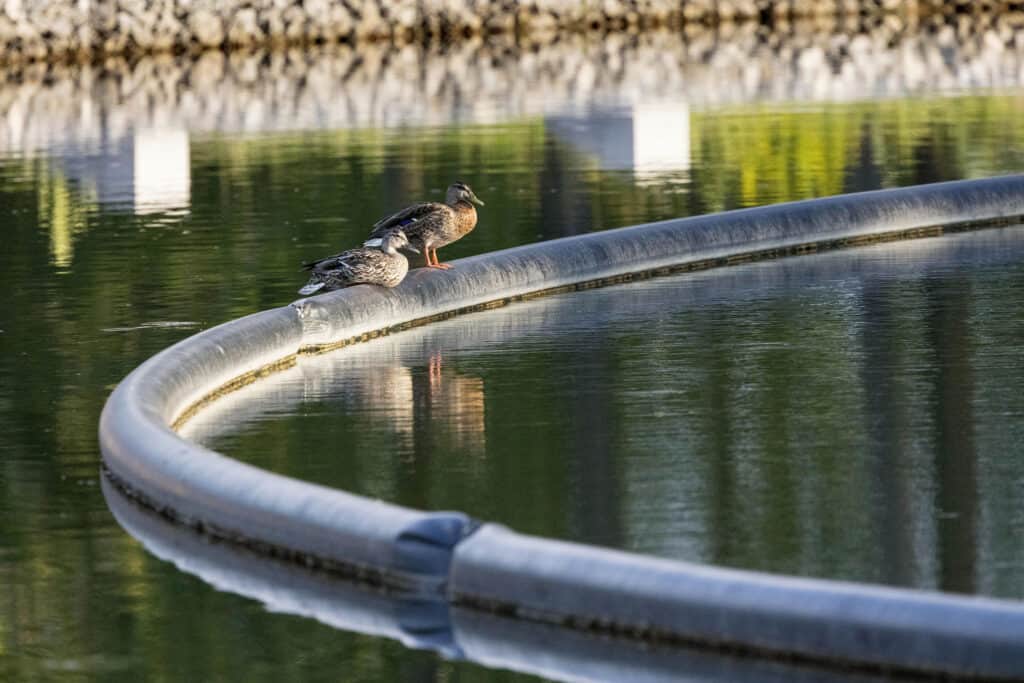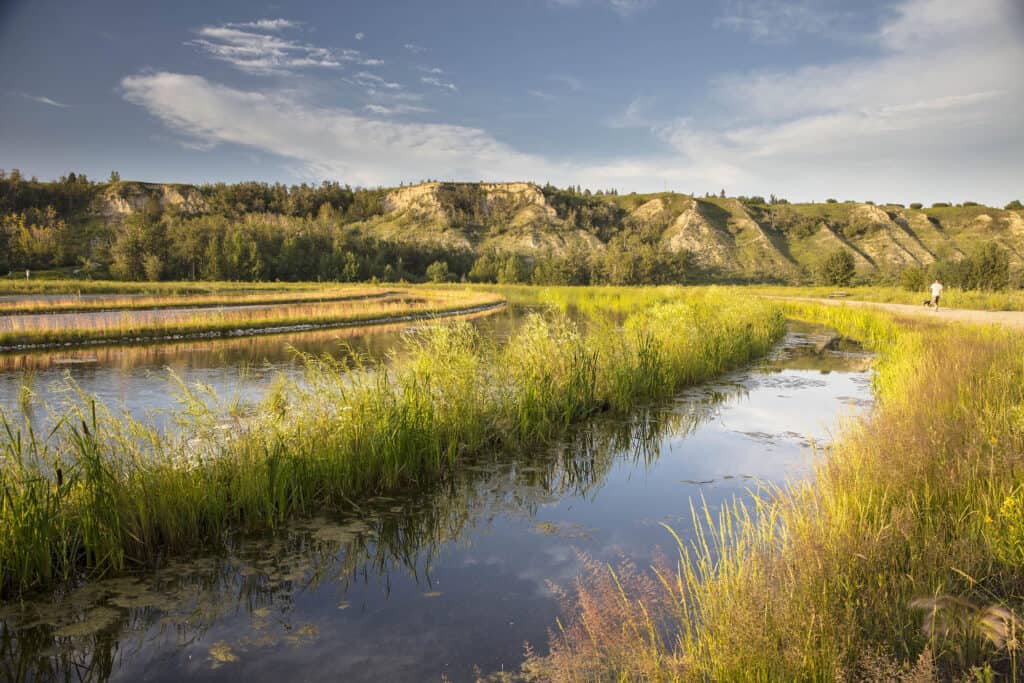This award-winning park in Calgary, Alberta, Canada provides residents with lush natural spaces, major public artworks, and a tour of natural stormwater treatment processes—an engineering feat we helped deliver.
From derelict site to celebrated park
The Dale Hodges Park project turned the site of an abandoned gravel pit by the Bow River into a unique stormwater management and treatment facility as well as a biodiverse public park.
AECOM played a critical role in this restoration process, providing the engineering and environmental services to realize a vibrant public space that also educates the public on sustainable stormwater treatment.
The motivation to redevelop the project area—formerly the Klippert gravel pit—into a stormwater treatment facility came from an opportunity to address stormwater runoff from upstream communities, with the goal of significantly benefiting the natural environment.
What followed was Dale Hodges Park—the largest stormwater retrofit construction project The City of Calgary has ever undertaken. The park was named after Alderman Dale Hodges in recognition of his many contributions to Calgary as the longest service member of council.
Key to the successful site transformation was a collaboration spanning water resource engineering, landscape architecture and public art – thanks to our partners O2 Planning + Design, Source 2 Source, and Sans Façon / Watershed+. The team’s multidisciplinary approach, collective knowledge and creativity was critical in delivering this incredibly valuable and strategic park.
Innovation in nature
Today, Dale Hodges Park features ponds, wetlands, meandering streams, culverts, bridges, walking and cycling paths, boardwalks, a lookout point and a stunning variety of plants and wildlife.
But beyond providing new, natural spaces, Dale Hodges Park gives visitors a tour of its innovative, integrated stormwater treatment processes, which AECOM and its partner, Source2Source helped engineer. O2 Planning + Design provided additional landscape architecture design.
When the stormwater enters the site from the catchment area, it streams in jets through the source walls. The stormwater then travels to the 90-meters-in-diameter Nautilus PondTM, designed by Source2Source Inc. This innovative sediment removal clarifier removes the larger sediment in a relatively small footprint.
From the pond, the water then flows to the slender cascade—a waterfall like feature—and beyond to the mirror pool, a small retention pond just downstream. As the water moves between these features, it undergoes the initial stages of treatment. It then flows to the wetland, where the plants in the marshy conditions remove turbidity and nutrients that would not be removed in a conventional system. Eventually, the water is discharged into the river through two Tideflex Valves, which will help mitigate fish migration into the system.
The result is a system designed to function utilizing gravity, but without gates and electronic monitoring systems. Moreover, its many features also allow for pedestrian access to infrastructure, giving visitors an inside look at the treatment process.
AECOM’s involvement included environmental site remediation, regulatory approvals, global hydraulic analysis, design of hydraulic structures and piping components, and construction inspections and administration.
Aesthetic Engineering
The conversion of the industrial site to a stormwater treatment facility and park was not simply an engineering exercise: The City of Calgary committed more than $2 million of public art money to the project. This unique focus on aesthetic elements created a system and space that showcases the detail and beauty of the stormwater ecological treatment process, as well as the introduced wildlife habitat that the park supports.
Many elements of the treatment process and viewpoints were designed to evoke a reaction, whether that’s tranquility, curiosity, or fascination. The park features ponds, wetlands, meandering streams, culverts, bridges, walking and cycling paths, boardwalks, lookout point and a stunning variety of plants and wildlife. This facility was the result of an innovative collaboration between artists, engineers, and landscape architects and advances The City’s goals for environmental sustainability. The space, once was a contaminated industrial eye-sore, is now a beautiful, vibrant, and functional public asset.

